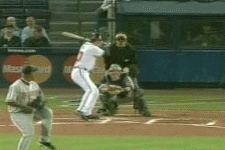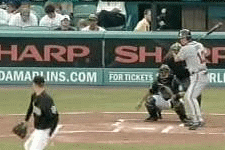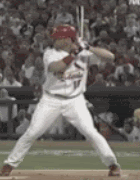I've tried to stay out of discussion since...
My 2 cents, I've never taught a player to push off of their back foot. In hitting, I never thought about it. Is there some resistance? Sure, and the same as walking or ... However, I think that purposly thinking push off is similar to those other "thoughts" that impede the swing process.
Long story short. One of my Dads brought in an instructor in the winter/spring of 2006. The Dad owns a barn and our team hits there every winter. One primary point this guy brought in was the push off. I've never had so much trouble getting the players back into a groove AND my team never got off to such a poor start.
I want you to think about this. Take the move Elvis used when he was on stage. Now, use that comparison to the front knee pointing in or hip load and then, the rear knee following. Use that mental image and look at some pro video. Now try it. You won't feel yourself push off the back foot AND you will be very quick with the hips.
Some video for this discussion and I'll take a hike again. It is refreshing to see a good discussion without all of the attacks. Thanks, I appreciate that.
Bonds:

Edmonds:


Pujos:

Lee:











